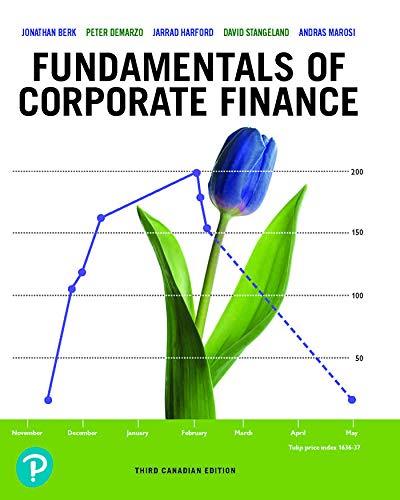
7.3 Value a risky corporate bond, assuming that the risk-free interest rate is 4 per cent per period, where a period is defined as six months. The corporate bond has a face value of 100 payable two periods from now, and pays a 5 per cent coupon per period: that is, interest payments of 5 at the end of both the first period and the second period. The corporate bond is a derivative of the assets of the issuing firm. Assume that the assets generate sufficient cash to pay off the promised coupon one period from now. In particular, the corporation has set aside a reserve fund of 5/1.04 per bond to pay off the promised coupon one period from now. Two periods from now, there are three possible states. In one of those states, the assets of the firm are not worth much and the firm defaults, unable to generate a sufficient amount of cash. Only 50 of the 105 promised payment is made on the bond in this state, The exhibit below describes the value of the firm's assets per bond (less the amount in the reserve fund maintained for the intermediate coupon) and the cash pay-offs of the bond. The non-reserved assets of the firm are currently worth 100 per bond. At the U and D nodes the reserve fund has been depleted, and the remaining assets of the firm per bond are worth 120 and 90, respectively, while they are worth 300, 110 and 50, respectively, in the UU, UD and DD states two periods from now Paths for (a) the Value of the Firm's Assets Per Bond (Above the Node); and (b) Cash Pay-offs of a Risky Bond (Below the Node); in a Two-Period Binomial Tree Diagram 300 120 105 100 110 UD 105 5 90 5 50 50 7.3 Value a risky corporate bond, assuming that the risk-free interest rate is 4 per cent per period, where a period is defined as six months. The corporate bond has a face value of 100 payable two periods from now, and pays a 5 per cent coupon per period: that is, interest payments of 5 at the end of both the first period and the second period. The corporate bond is a derivative of the assets of the issuing firm. Assume that the assets generate sufficient cash to pay off the promised coupon one period from now. In particular, the corporation has set aside a reserve fund of 5/1.04 per bond to pay off the promised coupon one period from now. Two periods from now, there are three possible states. In one of those states, the assets of the firm are not worth much and the firm defaults, unable to generate a sufficient amount of cash. Only 50 of the 105 promised payment is made on the bond in this state, The exhibit below describes the value of the firm's assets per bond (less the amount in the reserve fund maintained for the intermediate coupon) and the cash pay-offs of the bond. The non-reserved assets of the firm are currently worth 100 per bond. At the U and D nodes the reserve fund has been depleted, and the remaining assets of the firm per bond are worth 120 and 90, respectively, while they are worth 300, 110 and 50, respectively, in the UU, UD and DD states two periods from now Paths for (a) the Value of the Firm's Assets Per Bond (Above the Node); and (b) Cash Pay-offs of a Risky Bond (Below the Node); in a Two-Period Binomial Tree Diagram 300 120 105 100 110 UD 105 5 90 5 50 50







